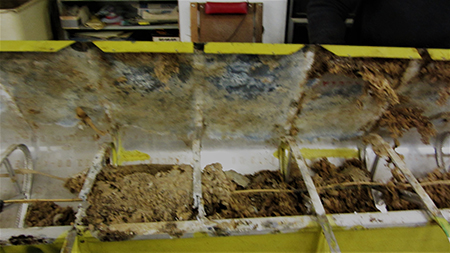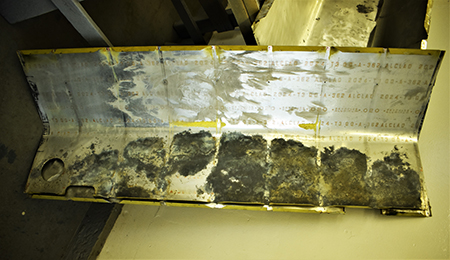A Mobile Home for Mickey and Minnie
By Mike Davenport, EAA 89102, Langley, British Columbia
April 2020 - Modern airliners used for long-distance flights sometimes will have beds or seats that fully recline for the first-class passenger with the wherewithal to pay for said luxury. On a smaller scale and for shorter trips, lesser beings have been known to set up a more permanent residence in smaller aircraft.
Case in point: A Piper PA-22 recently arrived at a local airport in desperate need of some TLC, particularly to the wings and tail feathers. The work proceeded pretty much as anticipated, with all the steel bits sandblasted, primed, and painted, and fabric replaced, restoring them to like-new condition.
The wings were a different can of worms, or more accurately, a mouse house of magnificent proportions.
The fabric was stripped, tanks removed, and when the leading edge metal was opened up to inspect the area in front of the spar the first residence was discovered. There were two, one in each wing. How long they had been in use was undetermined, but clearly they had been occupied for some time. The building material looked like it could have been made from upholstery foam, perhaps from the seat cushions.

Mouse family nest.
As you can see in the fairly fuzzy photo, the larger of the two residences extended through five nose ribs, and its occupancy resulted in considerable corrosion. Mice it seems are not very fastidious and tend to evacuate bowels and bladder when and where the notion occurs. The resultant accumulation of feces and urine created the corrosion seen in the next photo.

Leading edge corrosion.
How the little beasties got in is a mystery, and why they stayed so long is yet another, as the aircraft was not a hangar queen and saw quite regular use.
A possible solution going forward would be to use baited traps in the hangar, or in the plane itself if tied down outside. However, that could create a different problem — what to do with the corpses?
The repair of the leading edge with the largest nest required extensive cleaning and then the application of several coats of zinc chromate primer to seal the surface. The other wing with the smaller nest had greater damage, and that required replacement of that panel as it was too badly corroded.
In retrospect, had the previous owner used a borescope to inspect this area, the nests might have been spotted sooner and perhaps they could have been removed before any significant damage occurred.
